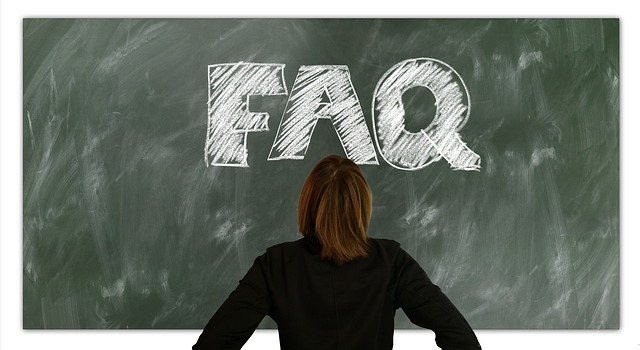What is Form 1120-S?
Form 1120-S is a crucial tax form that S corporations use to report income to the IRS. They must accurately complete and file Form 1120-S each year to report their income, deductions, and credits.
Filing this form allows the IRS to assess the corporation’s tax liability based on its financial performance for that tax year. Without filing Form 1120-S, an S corporation may face penalties or legal consequences from the IRS.
To ensure accuracy and compliance with IRS regulations, many S corporations seek assistance from tax preparers or professionals experienced in completing corporate tax returns. These experts can navigate the various schedules and requirements of Form 1120-S, helping businesses maximize their tax deductions while minimizing errors in their filings.
Who must File Form 1120-S?
Form 1120-S is an IRS form designed explicitly for S corporations, not C corporations or partnerships. S corporations with shareholders are required to file Form 1120-S for their tax reporting. This form helps the Internal Revenue Service (IRS) track the corporation’s income, deductions, and credits.
S corporations must ensure they accurately report their financial information using Form 1120-S. This includes detailing the company’s profits, losses, deductions, and other relevant financial data for each tax year.
When is Form 1120-S due?
S corporations must file Form 1120-S by the 15th day of the third month after the end of their tax year, such as March 15th for a tax year ending on December 31st. If more time is needed, businesses can request an extension with Form 7004 for up to six months.
However, any taxes owed must still be paid by the original due date. Failing to file on time may result in penalties and interest on unpaid taxes, leading to significant additional costs. Timely submission of all necessary corporate tax forms is crucial to avoid financial burdens.
How do I complete and File Form 1120-S?
Form 1120-S can be obtained from the Internal Revenue Service’s (IRS) official website or by visiting a local IRS office. Follow these steps to complete and file the form. You can also find more detailed instructions on the IRS website.
Step 1: Gather All Necessary Information
Before you begin filling out Form 1120-S, ensure you have all the required information. This includes the company’s financial records, income statement, balance sheet, and other relevant documents.
Step 2: Complete Part I – Income
In Part I of Form 1120-S, you will report the company’s income, deductions, and credits. This includes items such as gross receipts, cost of goods sold, and other income. Be sure to fill out all the necessary lines and provide accurate figures.
Step 3: Complete Part II – Balance Sheet
Part II of the form requires you to report the company’s assets, liabilities, and shareholders’ equity. You will need to provide details such as cash, accounts receivable, inventory, and other assets, as well as outstanding debts and other liabilities.
Step 4: Complete Part III – Analysis of Net Income
In this section, you will provide a detailed breakdown of the company’s net income. This includes reconciling taxable income with book income and reporting any adjustments or tax preferences.
Step 5: Complete Part IV – Analysis of Other Income
If the company has any other sources of income not already reported in Part I, you will need to provide details in Part IV. This could include rental income, interest income, or any other excess net passive income.
Step 6: Review and File the Form
Review the form for accuracy and completeness once you have completed all sections of Form 1120-S. Then, file the form by the due date, along with any required schedules or attachments. Keep a copy for your records.
Frequently Asked Questions
Here are the most common questions about filing Form 1120-S.
What’s the difference between forms 1120 & 1120-S?
Regular C corporations use Form 1120, while Form 1120-S is specifically for an S corporation’s business income. The critical disparity lies in how these entities are taxed and how they report their income, deductions, and credits.
Regular C corporations file Form 1120, which involves separate taxation of the corporation itself from its owners. On the other hand, S corporations use Form 1120-S, which allows income, deductions, and credits to flow through to shareholders’ individual tax returns. This means that S corporation profits are only taxed at the shareholder level rather than both at the corporate and shareholder levels like in a C corporation.
For instance, if a company earns $100,000 as an S corporation with one shareholder who owns all stock shares, that $100K would be reported on the shareholder’s personal tax return even if it’s not distributed as dividends. However, in a C corporation scenario with similar earnings but no dividend distribution, taxes would still apply at both corporate and individual levels, resulting in potential double taxation.
What other tax forms do S Corporations file?
S Corporations primarily use Form 1120-S for their income tax returns. In addition to this, they may also need to file other tax forms for specific tax reporting requirements. These include:
Schedule B: Used by S Corporations to report the information required for the Schedule K-1, including income, deductions, and credits allocated to shareholders.
Schedule K-1: Used to report each shareholder’s share of the corporation’s income, deductions, credits, and other items. The shareholders then use this information when preparing their individual tax returns.
Schedule L: Used by S Corporations to reconcile book income with tax income on Form 1120S.
Schedule M-1: Used to reconcile the entity’s accounting income with its taxable income reported on Form 1120S.
Schedule M-2: Reconciliation of the S Corporation’s accumulated adjustments account.
Form 4562: Utilized to report depreciation and amortization for the corporation’s assets
Form 8825: This form applies when an S Corporation owns rental real estate or has made certain elections under section 168(h) regarding previously owned property.
Is Form 1120-S the same as Schedule C?
Form 1120-S is not interchangeable with Schedule C for tax reporting. While Schedule C is utilized for a sole proprietor’s federal income tax return, Form 1120-S is a corporate tax form.
Filing Form 1120-S involves more intricate tax reporting due to its focus on corporate taxes. It requires detailed information about the corporation’s income, deductions, and credits, which can be more complex than reporting business income on Schedule C.
Do I need an accountant to File Form 1120-S?
While an accountant is not required, hiring a tax professional can be highly beneficial. Tax preparers have the expertise and knowledge to ensure the accurate and timely submission of this corporate tax return form. They are well-versed in navigating the complexities of tax laws and regulations related to Form 1120-S, ensuring all necessary information is correctly reported.
A tax CPA can help maximize deductions and credits for your corporate tax return, potentially reducing your company’s overall tax liability. For instance, they can identify eligible expenses or investments that qualify for deductions or credits, optimizing your company’s tax position. This level of insight into tax forms and requirements is crucial in ensuring that you’re taking advantage of every opportunity available within the bounds of the law.
Pros & Cons of Hiring an Accountant to File Form 1120-S
Pros:
- Expertise in tax laws and regulations.
- Saves time and effort.
- Minimizes potential errors.
- Provides valuable financial advice.
- Helps maximize deductions and credits.
Cons:
- Cost of hiring an accountant.
- Potential lack of control over the process.
- Dependency on external expertise.
- Finding a reliable and qualified accountant.
Filing Form 1120-S – Final Thoughts
Whether you tackle it yourself or seek professional assistance, a solid understanding of Form 1120-S is essential. With this knowledge, you can confidently navigate the complexities of filing Form 1120-S for your S Corporation.
Remember, staying on top of your tax obligations is crucial for your company’s success and sustainability. So, take action to ensure compliance with the IRS guidelines to pave the way for a prosperous future.
Contact us if you have more questions about filing Form 1120-S or to apply for a small business loan. Our alternative business funding experts can help you find the best financing options for your goals.


















